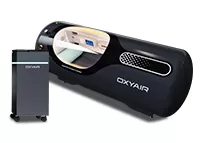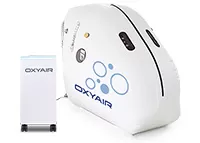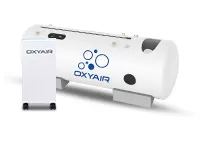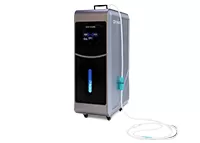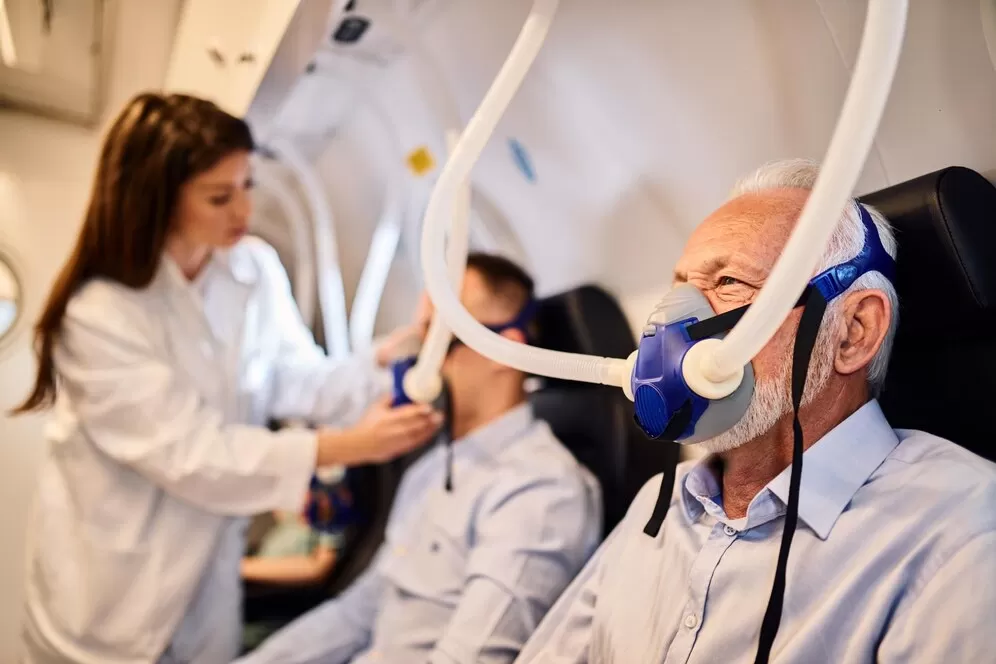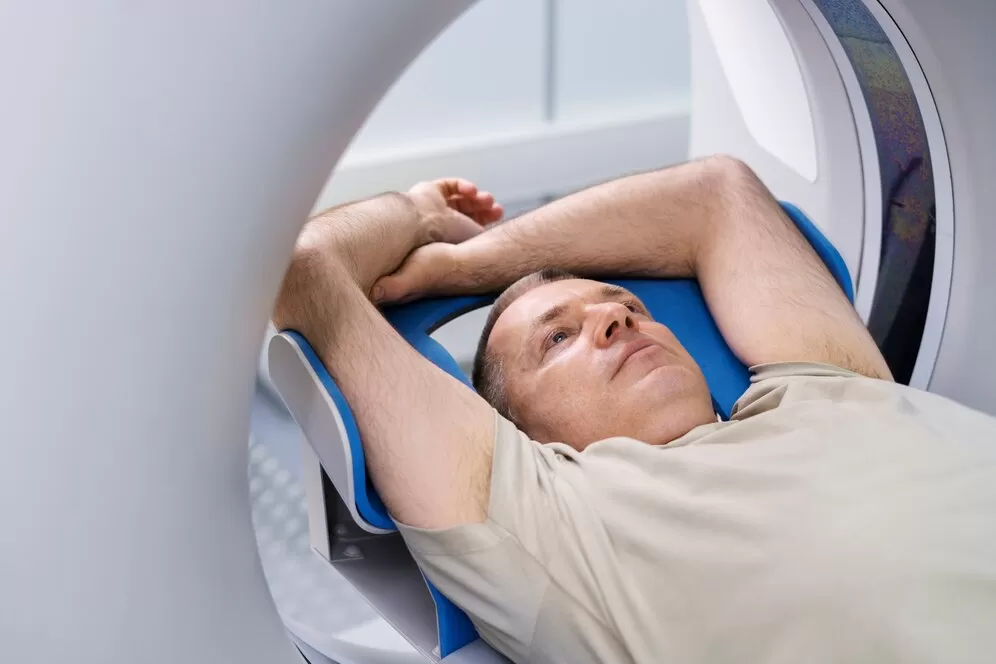Discover the Benefits of a Hyperbaric Chamber for Dogs
As a pet owner, you want the best for your furry friends, especially when it comes to their health and well-being. With advances in veterinary medicine, there are now more treatment options available than ever before, including hyperbaric oxygen therapy. Hyperbaric chambers, once only used in human medicine, are now being adapted for veterinary use, and the results have been remarkable.
Hyperbaric therapy involves placing a dog inside a pressurized chamber and providing them with 100% oxygen. This therapy can help promote healing and enhance recovery, making it an increasingly popular option for veterinarians and pet owners alike.
In this article, we will explore the benefits of a hyperbaric chamber for dogs, how it works, the conditions it can treat, and what to expect during treatment. We will also discuss the safety and well-being of dogs during hyperbaric therapy, as well as the costs and availability of this treatment option.
Key Takeaways:
Hyperbaric chambers provide dogs with 100% oxygen in a pressurized environment, promoting healing and enhancing recovery.
Hyperbaric therapy is gaining recognition as a valuable treatment option for various medical conditions in dogs.
Hyperbaric therapy can be used to treat wounds, infections, neurological disorders, and other ailments in dogs.
Veterinary-specific hyperbaric chambers are designed with specialized features and safety measures to ensure the well-being of dogs during treatment.
Hyperbaric therapy can be used as a complementary treatment option and integrated with traditional veterinary care and other alternative therapies.

Understanding Hyperbaric Oxygen Therapy for Dogs
If you're considering hyperbaric oxygen therapy for your dog, you may wonder exactly what this treatment entails. Hyperbaric oxygen therapy, or HBOT, is a medical treatment in which your dog enters a canine hyperbaric chamber where the air pressure is higher than normal atmospheric pressure. This allows your dog to breathe in pure oxygen at a higher concentration, which helps to promote healing and recovery from various medical conditions.
The history of hyperbaric medicine for dogs dates back to the early 20th century when it was used to treat gangrene in veterinary medicine. Today, hyperbaric therapy has come a long way and is widely recognized as a valuable treatment option for numerous conditions in dogs.
How Hyperbaric Oxygen Therapy Works for Dogs
During hyperbaric therapy, the increased air pressure forces oxygen to dissolve more rapidly in your dog's body fluids, plasma, and tissues. This results in an increased supply of oxygen to the affected areas and enhances the natural healing process.
Hyperbaric therapy has several mechanisms of action that contribute to its healing benefits for dogs. It increases oxygen levels in tissues, making it easier for cells to produce energy and promote healing. It also reduces inflammation and swelling, which can improve recovery times and relieve pain. Additionally, hyperbaric therapy enhances the immune system, promoting the body's natural ability to fight infections and other medical conditions.
Overall, hyperbaric oxygen therapy for dogs is a non-invasive, safe, and effective treatment option that can promote healing and recovery from a wide range of conditions.
The Mechanism of Action behind Hyperbaric Therapy
Hyperbaric therapy is a unique medical treatment that involves the use of a hyperbaric chamber to deliver oxygen to the body at high pressures. For dogs, hyperbaric treatment involves placing them in a special dog oxygen chamber and increasing the oxygen levels to enhance healing and recovery.
The mechanism behind hyperbaric therapy is straightforward. By increasing the amount of oxygen delivered to the body, hyperbaric treatment can promote faster healing and reduce inflammation in dogs. The increased pressure in the chamber also allows oxygen to be dissolved in the blood plasma, enhancing the benefits of oxygen delivery and increasing overall oxygen availability in the body.
Hyperbaric therapy for dogs is particularly effective in treating conditions that benefit from increased oxygen delivery, such as wounds, infections, and neurological disorders. The improved oxygen levels can accelerate healing and improve the immune response, making it an ideal choice for many dogs undergoing medical treatment.
Conditions Treated with Hyperbaric Therapy in Dogs
Hyperbaric medicine for dogs has become a popular treatment option for a wide range of medical conditions. This innovative therapy can help accelerate healing and enhance recovery in dogs, improving their overall quality of life.
Dogs suffering from wounds, infections, and inflammation can benefit greatly from hyperbaric therapy. Hyperbaric therapy can promote tissue healing by increasing oxygen levels in the body, allowing damaged tissue to regenerate more quickly.
Hyperbaric therapy for canine has also shown promising results in treating neurological conditions such as spinal cord injuries and brain trauma. The increased oxygen levels can help decrease inflammation in the affected areas, promoting healing and potentially preventing further damage.
Moreover, hyperbaric therapy can help reduce the effects of certain toxins and poisons in dogs. The therapy can help flush out these harmful substances from the body, protecting vital organs and minimizing the potential for long-term damage.
Overall, hyperbaric medicine for dogs is a versatile treatment option that can benefit a variety of medical conditions. If your dog is suffering from any of these conditions, hyperbaric therapy may be worth considering as a treatment option.
The Role of Veterinary Hyperbaric Chambers
If you are considering hyperbaric therapy for your dog, it is essential to understand the importance of using veterinary-specific hyperbaric chambers.
A veterinary hyperbaric chamber is specifically designed to accommodate the anatomy and size of dogs, ensuring maximum comfort and safety during treatment. The chambers must comply with strict regulations and safety measures to ensure the highest level of care for canine patients.
Furthermore, veterinary hyperbaric chambers feature specialized air filtration systems that remove harmful particles and contaminants from the chamber's atmosphere, making the environment ideal for the healing process and reducing the risk of infection.
When selecting a veterinary clinic or hospital for hyperbaric therapy, ensure they have a certified veterinary hyperbaric chamber and a trained hyperbaric therapy team to provide your dog with the best possible care.
Preparation and Procedures for Hyperbaric Treatment
Before your dog undergoes hyperbaric treatment, a thorough evaluation will be conducted by a veterinarian to ensure it is a safe and appropriate option. This evaluation will include a review of your dog's medical history and diagnostic testing, such as X-rays and bloodwork.
During the session, your dog will be placed in a hyperbaric chamber specifically designed for canines. The chamber is pressurized with pure oxygen, which your dog will breathe in through a special mask or hood. The duration of the session will depend on your dog's condition and the treatment plan prescribed by the veterinarian.
It is important to note that your dog must be calm and fully cooperative during the treatment session. To help with this, you may be present in the room and communicate with your dog through a two-way intercom system.
After the session, your dog will be carefully monitored for any adverse reactions or side effects. Most dogs experience no negative effects from hyperbaric therapy and can resume their normal activities immediately following the treatment.
Benefits of Hyperbaric Therapy for Dogs
Hyperbaric therapy offers several benefits to dogs undergoing treatment. Here are some of the advantages:
Accelerated wound healing: Hyperbaric therapy can speed up the healing process for wounds and injuries in dogs. The increased oxygen levels promote tissue regeneration and reduce inflammation, allowing for faster recovery.
Enhanced post-surgical recovery: Dogs undergoing surgery can benefit from hyperbaric therapy, which can aid in reducing pain, swelling, and inflammation. This can result in an overall faster recovery time.
Improved circulation: Hyperbaric therapy improves blood circulation in dogs, which can help with conditions such as arthritis and hip dysplasia. The increased flow of oxygen-rich blood can decrease pain and inflammation and improve mobility.
Boosted immune system: Hyperbaric therapy can strengthen the immune system in dogs, helping them fight off infections and illnesses more effectively. The high levels of oxygen can increase white blood cell production, promoting better overall health and well-being.
These are just a few examples of the many benefits that hyperbaric therapy can offer to dogs. By providing advanced care and promoting faster healing, hyperbaric therapy is becoming an increasingly popular treatment option in veterinary medicine.
Successful Case Studies of Hyperbaric Therapy in Dogs
Hyperbaric therapy has been used successfully to treat a wide range of medical conditions in dogs. Here are some real-life case studies that showcase the benefits of this innovative treatment modality:
'Riley, a golden retriever, was diagnosed with a severe bacterial infection that was resistant to antibiotics. After several unsuccessful treatments, his veterinarian recommended hyperbaric therapy. After just a few sessions in the hyperbaric chamber, Riley's condition improved dramatically. His infection cleared up, and he was able to return home to his family happy and healthy.'
In this case, hyperbaric therapy was able to eliminate a stubborn infection that was unresponsive to traditional antibiotic treatment.
'Max, a Labrador retriever, was hit by a car and suffered from severe internal injuries. He underwent emergency surgery but continued to struggle with healing. Hyperbaric therapy was introduced to help improve his recovery. Thanks to the increased oxygen levels and enhanced healing properties provided by the hyperbaric chamber, Max was able to recover more quickly and was soon back to his active lifestyle.'
In this case, hyperbaric therapy helped to accelerate healing and improve post-surgical recovery, allowing Max to return to his normal activities.
'Daisy, a German shepherd, was experiencing chronic joint pain and inflammation due to arthritis. Traditional pain medications were unsuccessful in managing her symptoms. Her veterinarian recommended hyperbaric therapy to promote healing and reduce inflammation. After several sessions, Daisy's joint pain and swelling had improved significantly, allowing her to move around more comfortably and with less discomfort.'
In this case, hyperbaric therapy provided relief for a chronic condition that was unresponsive to traditional pain management techniques.
These case studies demonstrate the positive impact that hyperbaric therapy can have on dogs suffering from various medical conditions. With its ability to accelerate healing, reduce inflammation, and promote overall wellness, hyperbaric therapy is becoming an increasingly valuable treatment option in veterinary medicine.
The Cost and Accessibility of Hyperbaric Treatment for Dogs
While hyperbaric therapy offers numerous benefits for dogs, it is important to consider the cost and accessibility of this treatment option. The investment involved in hyperbaric treatment for dogs can vary depending on the type of condition being treated, the number of sessions required, and the location of the veterinary clinic or hospital providing the treatment.
It is important to note that while hyperbaric therapy may be considered a more expensive treatment option, it can often lead to faster healing times and less need for additional medical interventions, ultimately saving pet owners money in the long run.
Additionally, insurance coverage for pet hyperbaric therapy is becoming more common, and it is worth consulting with your veterinarian or insurance provider to explore potential coverage options.
The accessibility of hyperbaric chambers for dogs can also vary depending on location and availability. However, many veterinary clinics and hospitals are beginning to offer hyperbaric therapy as a treatment option, and it is worth researching and consulting with your veterinary care team to see if this option is available for your furry companion.
Overall, while hyperbaric therapy may involve additional cost and accessibility considerations, it is important to weigh these factors against the potential benefits for your dog's health and well-being.
Hyperbaric Therapy as a Complementary Treatment Option
If your furry friend is suffering from a medical condition, hyperbaric therapy can be a powerful ally in their healing journey. As a complementary treatment option, hyperbaric medicine for dogs can provide significant benefits to traditional veterinary care.
Hyperbaric therapy works by increasing the oxygen levels in your dog's body, which promotes healing and reduces inflammation. This makes it an effective treatment option for a wide range of conditions, including wounds, infections, and neurological disorders.
By integrating hyperbaric therapy with other alternative therapies and traditional veterinary care, you can create a comprehensive approach to your dog's wellness. This can result in improved outcomes, reduced recovery times, and enhanced quality of life for your dog.
Additionally, hyperbaric therapy is non-invasive and has no adverse side effects, making it a safe option for dogs of all ages and health conditions.
If you are considering hyperbaric therapy as a complementary treatment option for your dog, it's important to discuss it with your veterinarian. They can help you determine whether hyperbaric therapy is suitable for your dog's condition and recommend a course of treatment.
Ensuring the Safety and Well-being of Dogs during Hyperbaric Therapy
When undergoing hyperbaric therapy, the safety and well-being of your dog should be a top priority. It is crucial to ensure that the veterinary hyperbaric chamber used for treatment is properly maintained and designed specifically for dogs. This will reduce the risk of potential complications and ensure a safe and efficient treatment process.
Trained professionals should be present to oversee the therapy session and monitor your dog's condition throughout. These individuals should be experienced in administering hyperbaric therapy and be equipped with the necessary knowledge and equipment to address any issues that may arise.
Additionally, proper protocols should be followed to create a secure environment for your dog during hyperbaric treatment. This includes providing a comfortable space within the chamber, ensuring appropriate levels of oxygen and pressure, and carefully managing the duration of the therapy session.
By taking these precautions and investing in a properly maintained veterinary hyperbaric chamber, you can be confident in the safety and efficacy of hyperbaric therapy for your dog. Always consult with your veterinarian to determine if your dog is a good candidate for hyperbaric treatment and to discuss any potential risks or concerns.
Conclusion
A hyperbaric chamber for dogs is a valuable addition to veterinary medicine, offering numerous benefits for canines undergoing medical treatment. From wound healing to neurological disorders, hyperbaric oxygen therapy has proven to be an effective and safe treatment modality for dogs.
By understanding the mechanism of action behind hyperbaric therapy and the conditions that can be treated with this advanced medical procedure, pet owners can make informed decisions about their dog's healthcare.
While hyperbaric treatment for dogs may involve an investment in terms of cost and accessibility, it is a worthwhile option for those seeking a comprehensive approach to their pet's wellness. As a complementary treatment option, hyperbaric therapy can be integrated with traditional veterinary care and other alternative therapies to achieve optimal outcomes.
With strict safety measures and protocols in place, a veterinary hyperbaric chamber provides a secure environment for dogs to undergo treatment. By working with trained professionals and monitoring equipment, you can ensure the well-being of your canine companion during the hyperbaric therapy session.
In conclusion, a hyperbaric chamber for dogs provides advanced care and improved quality of life for canines in need. Whether it's promoting healing or enhancing recovery, hyperbaric oxygen therapy is an effective and safe option for dogs, offering pet owners peace of mind and their furry friends the best possible treatment.
FAQ
What are the benefits of a hyperbaric chamber for dogs?
A hyperbaric chamber for dogs can promote healing, enhance recovery, and provide advanced care for various medical conditions.
How does hyperbaric oxygen therapy work for dogs?
Hyperbaric oxygen therapy involves delivering high levels of oxygen to the body, which promotes healing, reduces inflammation, and improves overall health in dogs.
What conditions can be treated with hyperbaric therapy in dogs?
Hyperbaric therapy can be used to treat a wide range of conditions in dogs, including wounds, infections, neurological disorders, and more.
Why is using a veterinary hyperbaric chamber important for dogs?
Veterinary-specific hyperbaric chambers ensure the safety and well-being of dogs during treatment, with specialized features and regulations designed for their unique needs.
What is involved in the preparation and procedures for hyperbaric treatment in dogs?
The preparation for hyperbaric treatment in dogs involves an initial evaluation, followed by sessions in the hyperbaric chamber where the dog breathes in the pressurized oxygen.
What are the specific benefits of hyperbaric therapy for dogs?
Hyperbaric therapy offers benefits such as accelerated wound healing, improved post-surgical recovery, increased oxygen levels, reduced inflammation, and enhanced overall wellness in dogs.
Are there any successful case studies of hyperbaric therapy in dogs?
Yes, there have been numerous successful case studies showcasing the positive outcomes of hyperbaric therapy in dogs, demonstrating its effectiveness as a treatment option.
What is the cost and accessibility of hyperbaric treatment for dogs?
The cost of hyperbaric treatment for dogs can vary, and availability may depend on the location of veterinary clinics or hospitals that offer this innovative therapy.
How can hyperbaric therapy be used as a complementary treatment option for dogs?
Hyperbaric therapy can be integrated with traditional veterinary care and other alternative therapies to provide a comprehensive approach to healing and wellness in dogs.
What safety measures are taken to ensure the well-being of dogs during hyperbaric therapy?
Trained professionals, monitoring equipment, and proper protocols are in place to create a secure environment and ensure the safety of dogs during hyperbaric therapy.


